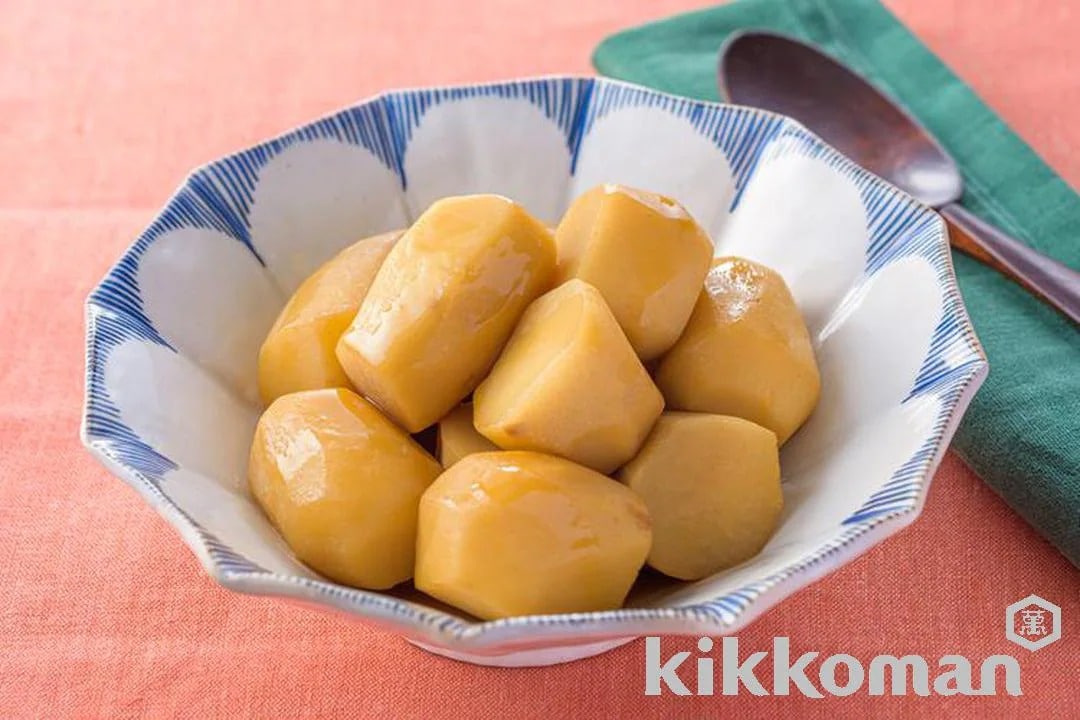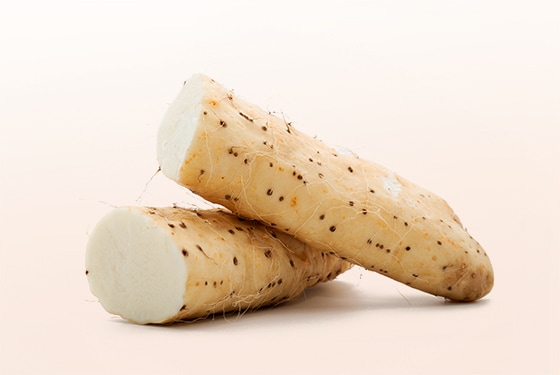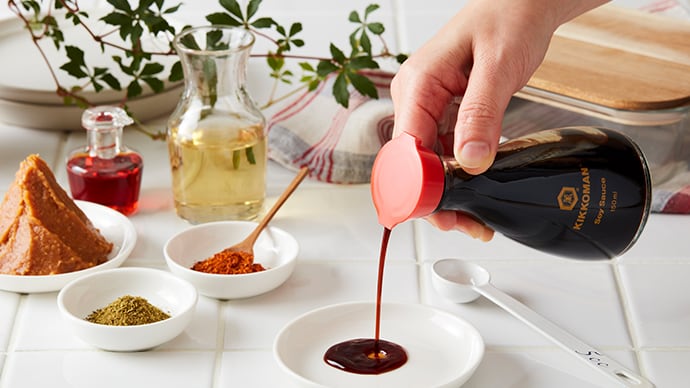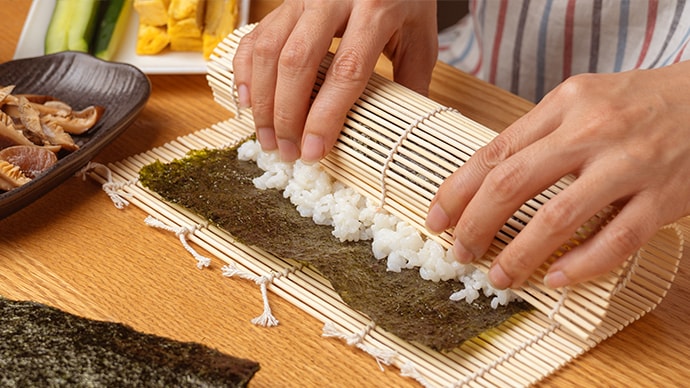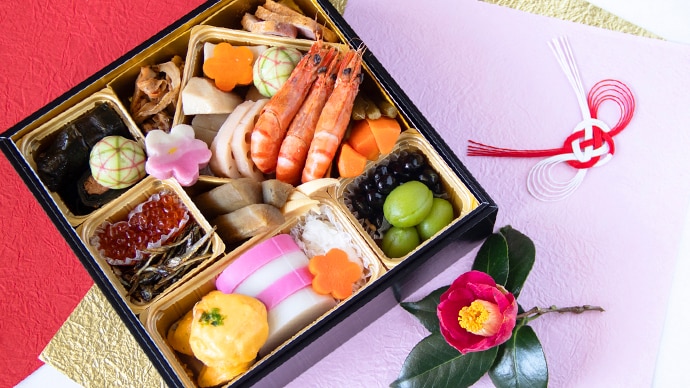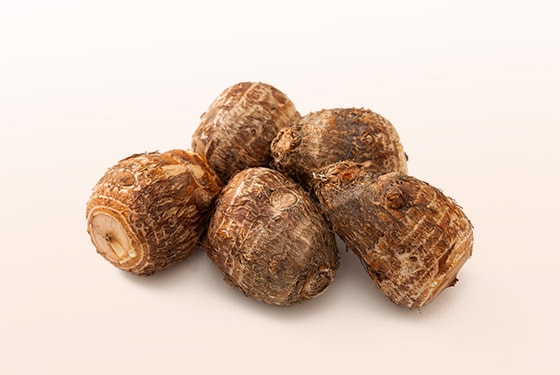
Satoimo have a long-standing history in Japan, having been eaten even before rice became common, and remain an essential component of New Year’s Osechi dishes
What is satoimo?
People eat the underground stem of the satoimo / Japanese taro (さといも in Japanese) plant, which is covered with a tough, brown-striped skin. The flesh is white and smooth, with a characteristic sticky texture. It is a type of potato that is known around the world as “taro,” and is thought to have been a staple food in Japan before rice cultivation began. Satoimo are often used in stews and soups, as well as in fried dishes, stir-fries, gratins, and salads.
Nutrition facts
Satoimo are mainly composed of starch, but are also rich in dietary fiber and contain a small amount of protein. These tubers boast a balanced mix of soluble and insoluble dietary fiber in a 1:2 ratio, which helps improve intestinal health and supports regular bowel movements. The unique slimy texture that appears when satoimo are peeled is a polysaccharide called galactan, a type of soluble dietary fiber. Satoimo also contain significant amounts of potassium, which helps the body excrete excess salt; iron, essential for oxygen transport throughout the body; vitamin B6, which supports amino acid metabolism; folic acid, which aids red blood cell production along with iron; and vitamin C, which promotes iron absorption.
To prevent the loss of the soluble dietary fiber and water-soluble vitamins, it is best to steam satoimo or add to soups to consume with broth.
Storage to prevent food loss
Wrap the satoimo in newspaper or place into a paper bag while still covered in dirt and store at room temperature for up to a month. In the summer and other hot seasons, wrap the satoimo in newspaper or paper towel, place into a storage-use plastic bag, and keep in the refrigerator. These tubers can be stored for about 2 weeks.
Trivia
As satoimo grow secondary spuds around the parent potato, and more even more potatoes grow around those, it is an essential ingredient in Osechi cuisine as a symbol of prosperity for descendants. There are varieties of satoimo where a long, thin parent tuber is eaten, varieties where the secondary baby tuber is eaten, and varieties where both the parent tuber and the baby tuber are eaten. All varieties can be prepared and cooked in the same ways.

Caution
The tingling sensation on your tongue when you eat satoimo, and the itching on your hands when you peel them, are caused by the calcium oxalate it contains. This compound is broken down when satoimo are cooked, but if a concern, sprinkle salt on the peeled satoimo, boil, and discard the boiling water before cooking.
Cooking Basics

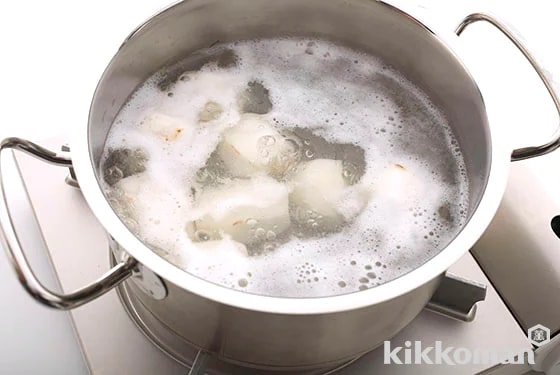
When satoimo are boiled or simmered, they becomes slimy and broth becomes murky and thick, so sprinkle on salt and rub all over before cooking satoimo. The recommended amount of salt is about 2 Tbsp per 5 to 6 satoimo. Place these into a pot, add plenty of water, and cook over high heat until bubbles begin to form. Rinse quickly in water to remove the sliminess. You can use this method to prepare dashi-flavored simmered dishes having clear, light broth.
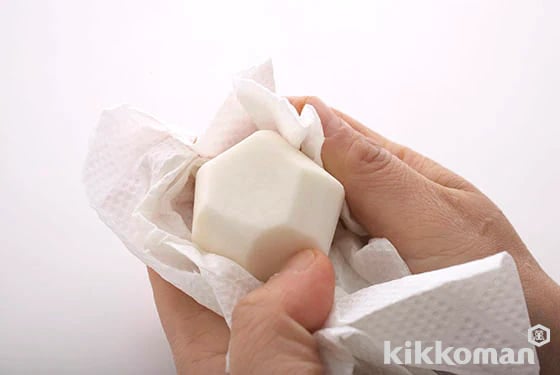
Once peeled, quickly rinse under cold water, then use a clean and dry dish cloth to wipe away any sliminess. Using paper towel is also convenient. For dishes where some thickness (sliminess) is welcome, such as stewed dishes, this is a commonly used method.

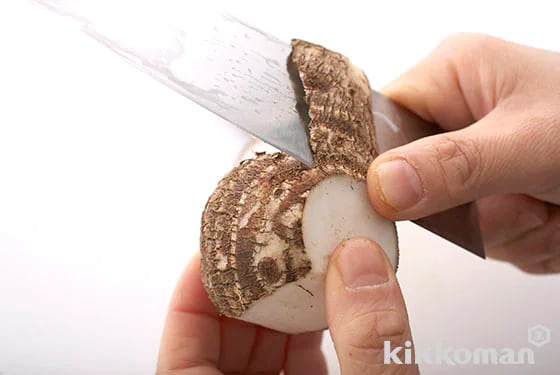
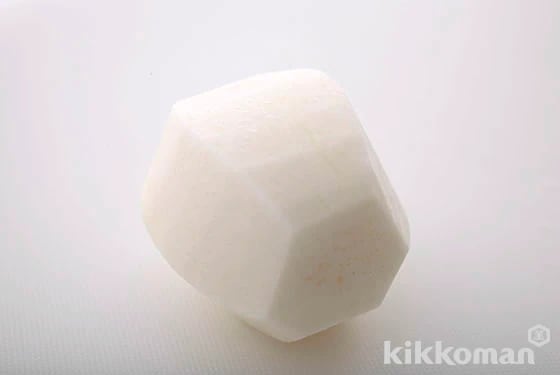
Peel the satoimo to create a six-sided shape. Doing so increases aesthetic appeal, and is especially recommended for Japanese-style simmered dishes served for guests. First thinly slice off the top and bottom, then adjust each width while peeling vertically to create six even sides. Once a section is peeled, peel the section on the opposite side next, rather than the section beside, as this will make it easier to create equal-sized peeled sections.
Related Recipes
20min+
188kcal
394mg
20min
483kcal
1000mg





